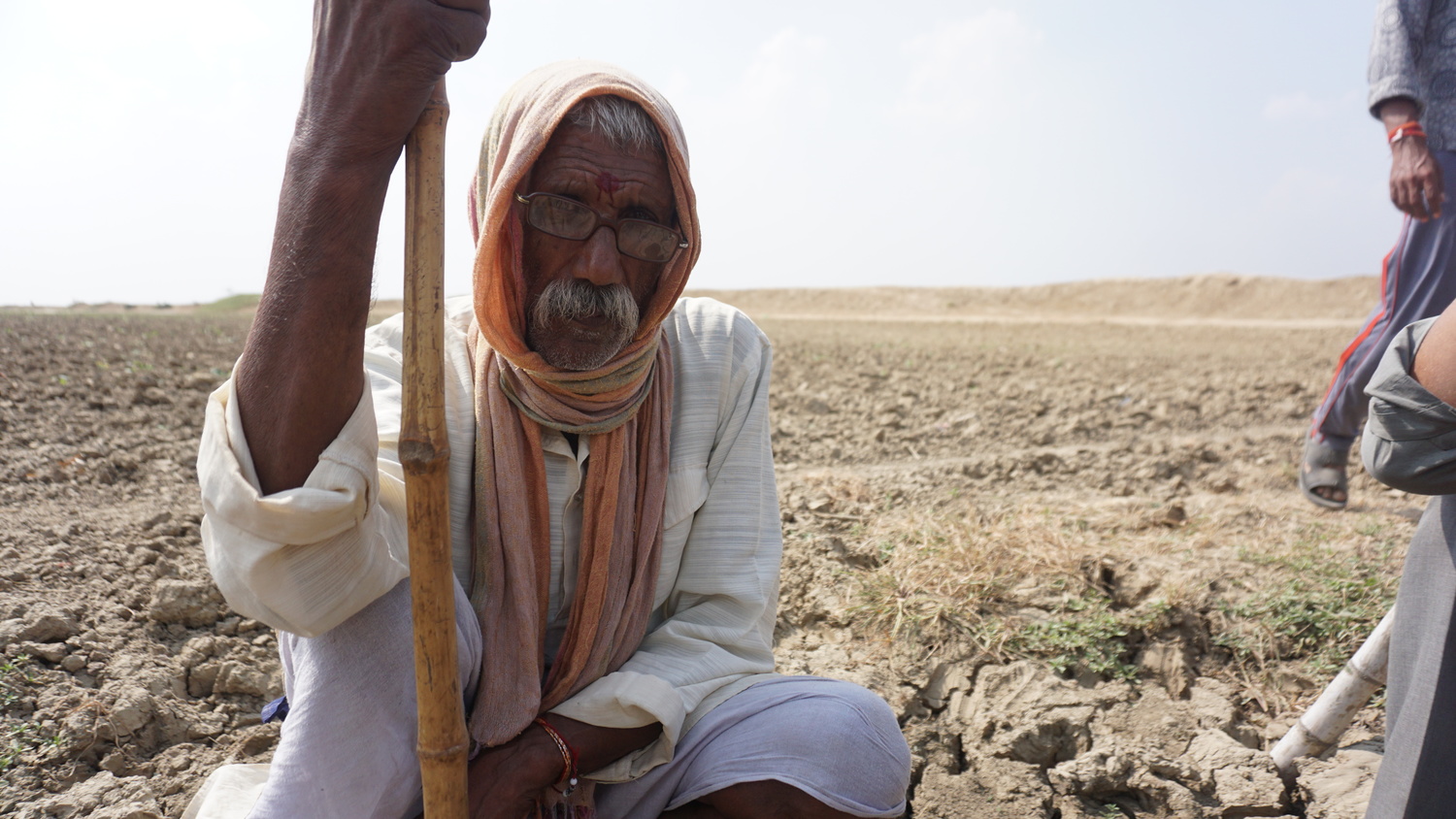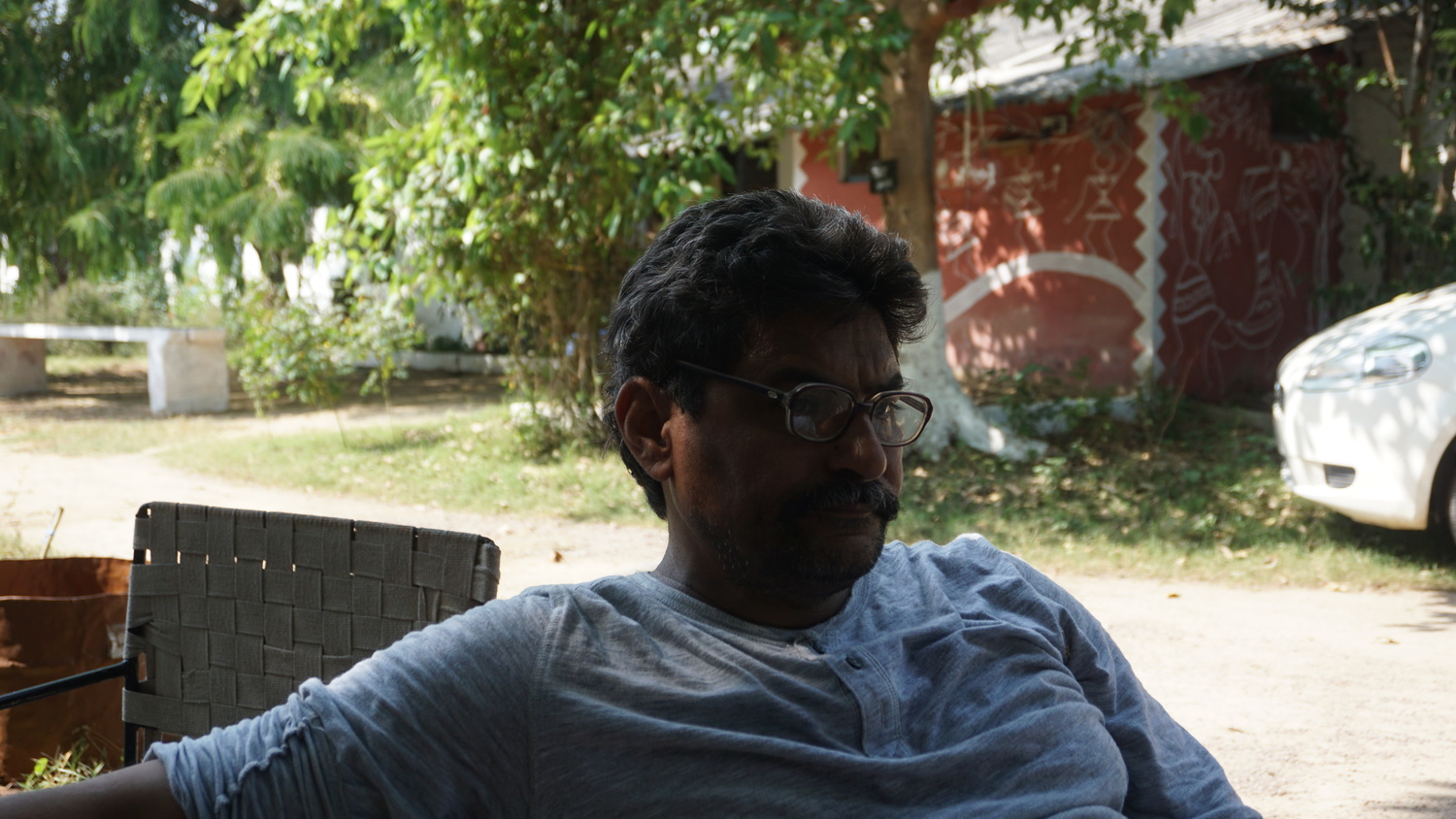
On October 22, 35-year-old Lallu Yadav was celebrating Govardhan Pooja, a Hindu festival celebrated after Diwali, in Panchkurha village, almost 22 kms from the district headquarters of Hamirpur in Uttar Pradesh. The men of the village including Yadav have been doing the Deewari dance for five consecutive days--going door to door, beating country-made goat-skin dhols with wooden sticks. The villagers believe that Deewari dance appeases the rain god. In a region that has seen drought for 12 years continuously and is reeling under a dry spell this year too, people are pinning their hopes on this ritual to bring about rainfall and save their crop.
Dancing continuously for more than three hours, the frail, five-feet-seven-inches tall Lallu was feeling faint. When villagers asked him if he was alright, he teared up. A farmer with four acres of land, Lallu has been growing jowar, paddy and lentils for seven winters. Last year, inadequate and untimely rainfall left most of his crop dry. Despite investing Rs 30,000, he earned only Rs 8,000. Apart from taking a loan of Rs 1.5 lakh from the Kisan Credit Card, he had also borrowed Rs 50,000 from a local moneylender. With neither savings nor stock of ration left, Lallu is pinning all his hopes on rain just so his three kids, wife and cattle do not die of starvation. "My family eats only one meal a day now," he says, his voice catching in his throat. “If it doesn't rain this year, we will all die of hunger. This is the condition of the entire village.”
Never ending drought in Bundelkhand
The region of Bundelkhand that spreads over 70,000 square kilometers comprising 13 districts across Madhya Pradesh and Uttar Pradesh has faced 17 droughts and one flood in just the last decade. The districts of Hamirpur, Banda, Jalaun and Mahoba have been declared drought-prone by the National Institute of Disaster Management. With the 2012 floods and annual deficit rainfall, crop failure is alarmingly common. 
Hamirpur, Mahoba, and Banda districts in Uttar Pradesh are visibly devastated. Farmers here usually grow winter crops like lentils and paddy, but the fields lie dusty and unploughed, with a few resilient weeds growing on them. The ponds are bone dry. Carcasses of cows, oxen and dogs dot the streets.
Tara Patkar, the founder of Roti Bank, an organisation that feeds the poor, says the main rivers of Yamuna, Ken and Betwa are so dry that they are reduced to sluggish streams today; there is not enough water to maintain the flow, much less irrigate the fields. Last year, Uttar Pradesh declared 50 districts drought affected. This year too, the average rainfall in Bundelkhand has been less than half the expected 808 millilitres of southwest rain (till October) needed for growing paddy. In June, there was only 56 percent of expected rain, in July it was 63 percent and 30 percent in August.
A drought has not been officially declared this year. In early October, looking at the hydrological pattern and crop situation, the Uttar Pradesh government's chief secretary ordered various departments to be prepared for "a potential drought".
Last year, the state government set a target of sowing crops in 4.5 lakh hectares in Hamirpur, but as of now, only 4.33 lakh hectares have been cultivated. Jitendra Mohan Srivastave, deputy director of the agriculture department of the UP government, explains that even with 96-100 percent sowing, the problem in Bundelkhand is the drying up of crops that results in less than 50 percent yield. This has been the case for decades now. "This is because the farmers do not have enough resources to irrigate their fields; there are very less groundwater and inadequate rainfall,” he says.
Farmers are feeling cornered. According to Rajendra Prasad, the district magistrate of Hamirpur, six farmers have died between February and September either of shock or committed suicide due to crop loss. A compensation of Rs 70,000 has been announced for their families.
How resilience pays
In the face of recurrent droughts, farmers are left with few options. Like Lallu Yadav, they could either spend their days gazing at the blank sky, wishing for the rain god to show some mercy or change the game and adapt to the rapidly changing weather that is leaving their lands dry. That’s just what Prem Singh did. Prem Singh, a farmer-activist in Banda's Choti Badokhar Khurd village, was one of the earliest in the region to develop a model of sustainable agriculture, based on integrated economy and multi-cropping. "Bundelkhand was rich in lentil production till the 80s when there were enough groundwater and rainfall. The water problems started only after that,” he says.
Singh divides his field into four equal parts. He plants fruit-bearing trees in one, food crops like drought-resistant lentils, sesame, and paddy in the second, he keeps livestock in the third, and in the last one, he digs a pond for conserving water. "If the crops don't work, then the fruits will pay me. The animal dung works as manure for the crops, and the animals also bring me income and food through milk and other products," Singh says.
Workable, inexpensive and long-lasting solutions, according to experienced farmers like Singh, water activists and agricultural scientists, include water recharging and sustainable farming. “Instead of complaining about the district administration, government and god, farmers should concentrate more on developing ponds and creating awareness about the need for it,” says Pushpendra Singh, a Banda-based water activist who started a campaign in the region called Apna Talab Abhiyan (Dig Your Own Pond campaign). Today, water levels in more than half of the villages in Hamirpur stand at 10-30 metres below the ground level and only eight villages see the water below 70 metres. If built carefully, according to the lay of the land and natural flow of water, ponds can recharge aquifers, prevent the existing rainfall from running off the ground, and store water for future use.
This model of water retention is growing in popularity in Uttar Pradesh, especially in areas with water scarcity. "With the help of local bodies and also by themselves, farmers have dug over 8,000 ponds," says Singh. Singh and Pushpendra have now submitted a proposal to the state chief secretary to help dig 70,000 more ponds in private lands.
Dr Balveer Singh, a senior agricultural scientist with the Uttar Pradesh Centre for Agriculture Research, observed that farmers adopted new models primarily to reduce their debt burden. "Until now, farmers only changed seeds and fertiliser brands as experiments, but now, they want to adopt Prem Singh’s model,” says the scientist.
More needs to be done to deal with Bundelkhand’s water woes, but private ponds seem to be a powerful grassroots-led start. In Kakuni village of Mahoba district, 52-year-old farmer Ram Khelavan Yadav says that his village has dug five big ponds. "Now, we do not depend on anything to water our farms,” he says.
Crop change as another solution
Crop change is another sustainable solution that many farmers are adopting here. Shree Kant Diwedi, a resident of Padvi village in Banda was cultivating sesame, pulse crops and paddy until 2012. However, after his brother committed suicide due to farm loan stress, he realised that the farming practices have to change.
Diwedi began planting amla trees and within three years, he could reap a profit of Rs 3 lakh from his five hectares of land. Not only is his family stable now, but he has also repaid his brother’s farm loan of Rs 63,000. “I stopped sowing seeds in all my fields and planted fruit-bearing trees like amla and guava and bought two cows and four goats. I sold milk for two years until my trees started to bear fruits,” Diwedi says.
"I do not have to invest much time to look after my fruit trees. Also, it requires less water to cultivate amla as compared to cereals and pulse crops. I have dug (a small pond) in my land and this year I am planning to sow sesame seeds," he adds.
Faced with continuous drought, many villagers have now turned to animal husbandry. Brajpal Singh (43) a resident of Barbai village in Mahoba has switched to dairy farming and is rearing more than 30 cows and buffaloes at his home. “My main occupation now is to sell milk. I have hired three men to look after everything. I never had debts but I faced loss in agriculture due to insufficient water but now everything is fine," says Brajpal, a father of four. He says he would go back to agriculture again only if the water crisis is solved.
Outmigration on the rise
Unfortunately, all are not this resilient. Due to crop failure, outmigration is on the rise in these villages. Thanks to a dismal harvest, Bhagwaan Deen, a 60-year-old farmer in Hamirpur, is planning to migrate to a city in search of work. "I have a loan of Rs 39,000, but the entire crop has been lost. I have to repay my debt and feed my family somehow. I cannot consume salfaas (poison) and leave my family to beg," says Deen.
Unable to invest any more into a generations-old occupation that is not fetching a profit anymore, Gajraj Yadav, a 65-year-old farmer from the same village, has abandoned farming, possibly forever. "My sons are now working in Banda district as motor mechanics," he says.
Dheeraj Singh, a 28-year-old railway contractor, has a similar story to narrate. Huge losses made his father stop sowing crops a couple of years ago. “Our land is lying barren. Dry fields are left to play cricket or for animals to die. I earn a salary, but no one other than a farmer will understand the pain of leaving his fields empty," he says, adding that many farmers are moving to cities like Lucknow, Delhi, Bhopal and Mumbai in search of employment.
Short-sighted solutions
The Uttar Pradesh government has been attempting to deal with this crisis in Bundelkhand. The previous Samajwadi party-government allocated Rs 1,400 crore to this region for the fiscal year 2016-17, but the condition did not improve. A high-review meeting chaired by the prime minister's office on April 9, 2016, gave a bonus of Rs 20 over the minimum support price for kharif crops here. In the same meeting, the Uttar Pradesh state government was asked to ensure maximum coverage of farmers in the newly-launched Pradhan Mantri Fasal Beema Yojana and hold district-wise camps to cover both loanee and non-loanee farmers in campaign mode. In August this year, chief minister Yogi Adityanath waived off loans of over 87 lakh farmers in Bundelkhand and elsewhere to the tune of over Rs 36,000 crore. 
Sudhir Panwar, a former member of the Uttar Pradesh Planning Commission and president of Kisan Jagriti Manch, says that Bundelkhand has been suffering precisely because of these short-sighted solutions. "The previous government distributed food packets and gave subsidies," he says. "The present government is waiving off loans. All this covers up the situation, but is not going to help the farmers in the long run."
The only long-term solution the state and central governments offer is the Rs 18000-crore Ken-Betwa river interlinking project, claiming it will address both water scarcity and drought. But Pushpendra does not believe the prohibitively expensive project would be effective. "The Ken-Betwa linking project has been approved but can a farmer wait till it is done?" he asks. Panwar says environmentalists opposed the river linking for scientific reasons of not interfering in hydro systems. “Moreover, the impact of linking Ken-Betwa will only be in the delta, not in all of Bundelkhand. So how is it going to help this region?" he asks.
(Saurabh Sharma is a Lucknow based freelance writer and a member of 101Reporters.com, a pan-India network of grassroots reporters.)
/articles/can-bundelkhand-farmers-weather-drought